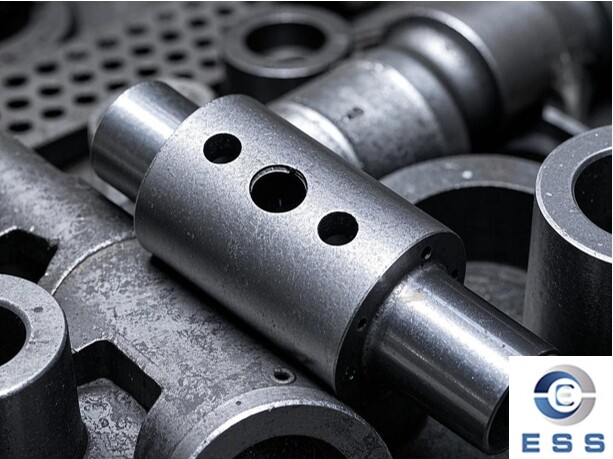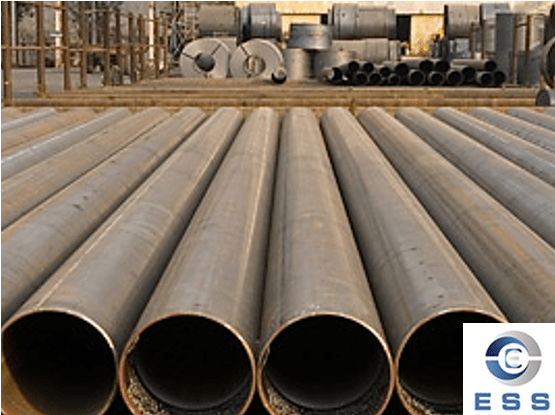
Specifications of Perforated Pup Joint
The perforated pup joints are pipe fittings used in a pipeline system, which mainly realizes specific
functions through holes on the pipe wall. In the pipeline system, it can make
the fluid in the pipeline be diverted, sampled, injected with additives or
connected with other pipelines or equipment at a specific location. For
example, in chemical production, catalysts or other chemicals can be
quantitatively injected into the main pipeline through the holes on the
perforated pup joint to meet the requirements of the production process.
Perforated Pup Joint Structural Features
The perforated pup joint is generally a
short tube with a relatively short length, which is usually significantly
shorter than the length of ordinary pipelines. It has specific connection
structures at both ends, such as threaded connection, flange connection or socket connection, so as to make reliable connection with other
pipelines or equipment.
There are one or more holes on the pipe
wall. The size, number and position of these holes are determined according to
the actual use requirements. The shape of the hole is generally circular, but
other shapes are used in special cases.
Perforated Pup Joint Specifications
In the complex pipeline system in the
industrial field, the perforated pup joint is a key connector. Although it is
small in size, it plays an indispensable role. Different engineering scenarios
have different requirements for perforated pup joints. The precise control of
their specifications and parameters is directly related to the stable
operation, safety and service life of the entire system. The following is a
summary of the specifications of common perforated pup joints:
|
Item
|
Specifications
|
|
Nominal
diameter
|
1/2
inch, 3/4 inch, 1 inch, 1.5 inch, 2 inch, 2.5 inch, 3 inch, 4 inch, etc.
|
|
Length
|
6
inch, 8 inch, 10 inch, 12 inch, 18 inch, 24 inch, etc.
|
|
Pressure
rating
|
150
pound class (about 2.1MPa), 300 pound class (about 4.2MPa), 600 pound class
(about 8.4MPa), 1500 pound class (about 21MPa), 2500 pound class (about
35MPa), etc.
|
|
Thread
specifications
|
American:
NPT 1/2, NPT 3/4, etc.
British:
BSPT 1 inch, BSPT 1.5 inch, etc.
Special
thread: airtight thread, etc.
|
|
Material
|
Carbon
steel: Q235, 20# steel, etc.
Stainless
steel: 304, 316, 316L etc.
Alloy
steel: chromium-molybdenum alloy steel, etc.
|
Perforated Pup Joint Application Areas
1. Petrochemical industry
In the process of petroleum refining and
chemical production, perforated pup joints are widely used in various fluid
conveying pipeline systems. For example, on the feed and discharge pipelines of
the reactor, they are used to add raw materials, take samples for analysis,
etc.
2. Natural gas industry
In the process of natural gas extraction,
transportation and processing, perforated pup joints can be used to install
pressure sensors, flow metering devices, etc., so as to monitor and control the
relevant parameters of natural gas.
3. Water treatment industry
In the water treatment system, perforated
pup joints can be used to add flocculants, disinfectants and other chemical
agents into the pipeline to purify the water quality. It can also be used to
extract water samples from the main pipeline for water quality testing.
4. Heating and cooling system
In the central heating or central
air-conditioning system, perforated pup joints can be used to connect branch
pipelines to achieve the distribution of heat or cold. It can also be used to
install instruments such as temperature sensors and pressure gauges to monitor
and adjust the operating parameters of the system.
Summary
In short, perforated pup joints play a
vital role in many industries with their unique structural design and rich and
diverse specifications. Accurately selecting suitable perforated pup joints can
not only ensure the efficient and stable operation of various pipeline systems
and meet the complex and changing production process requirements, but also
effectively improve the safety and reliability of the system and reduce
potential failure risks.













 Eastern Steel Manufacturing Co.,Ltd not only improve product production and sales services, but also provide additional value-added services. As long as you need, we can complete your specific needs together.
Eastern Steel Manufacturing Co.,Ltd not only improve product production and sales services, but also provide additional value-added services. As long as you need, we can complete your specific needs together.










